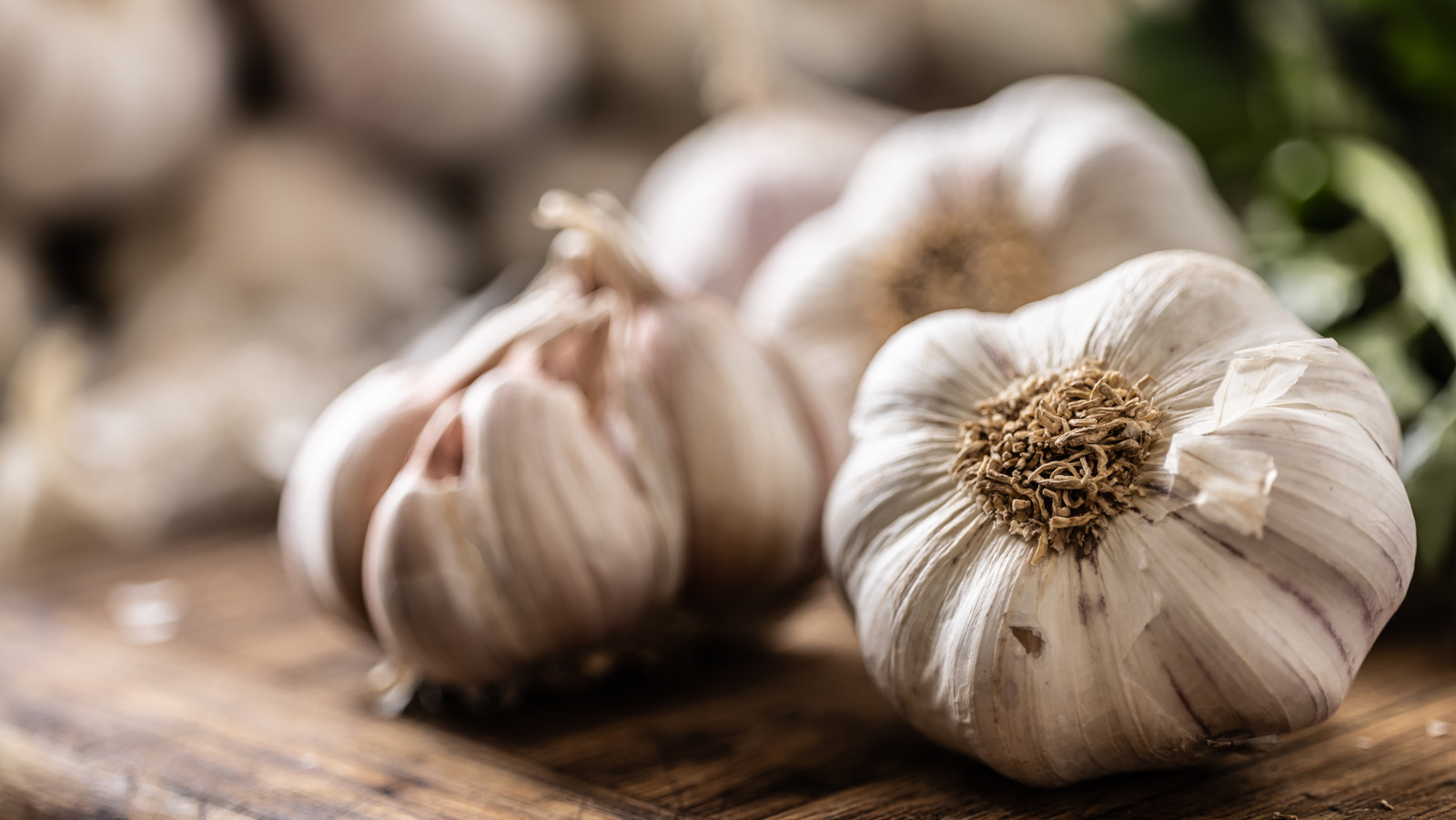
"An unpeeled head of garlic can stay fresh for up to six months. After this point, the cloves may become dry or turn moldy and powdery, making them unsafe to eat. However, if you're certain that you are cooking with garlic that is fresh, and still find that some cloves have turned an unusually orange color, what's going on? This phenomenon is known as waxy breakdown and can occur weeks after harvest in response to unfavorable growing, curing, and transportation conditions."
"A bulb of garlic that has undergone waxy breakdown inside can often appear normal on the outside, albeit a little shrivelled. It is only when the papery sheath is removed that the amber color of the affected cloves is revealed. The texture of the cloves can also be almost jelly-like or waxy, making them slightly more yielding on the surface. While the shrunken cloves won't be super-soft, they will have some give and can be translucent in appearance."
"Unlike garlic that has turned moldy and spoiled due to fungal growth, waxy breakdown is a physiological condition and is believed to occur for three reasons. Firstly, high temperatures close to the time of harvest can be a factor. Secondly, exposure to too much sunlight during the curing process may be a cause, and finally, poor ventilation during the storage and transportation could be an additional trigger."
Unpeeled garlic can stay fresh up to six months, after which cloves may dry or develop mold. Waxy breakdown causes cloves to turn amber or orange weeks after harvest while the bulb often appears normal externally. Affected cloves can be translucent, slightly shrivelled, and have a jelly-like or waxy texture with mellower, sweeter flavor and reduced aroma. Waxy breakdown is a physiological condition linked to high temperatures near harvest, excessive sunlight during curing, and poor ventilation in storage or transport. Orange-colored cloves are not diseased and are safe to eat, though cooking or pureeing is recommended to improve texture and flavor.
Read at Tasting Table
Unable to calculate read time
Collection
[
|
...
]